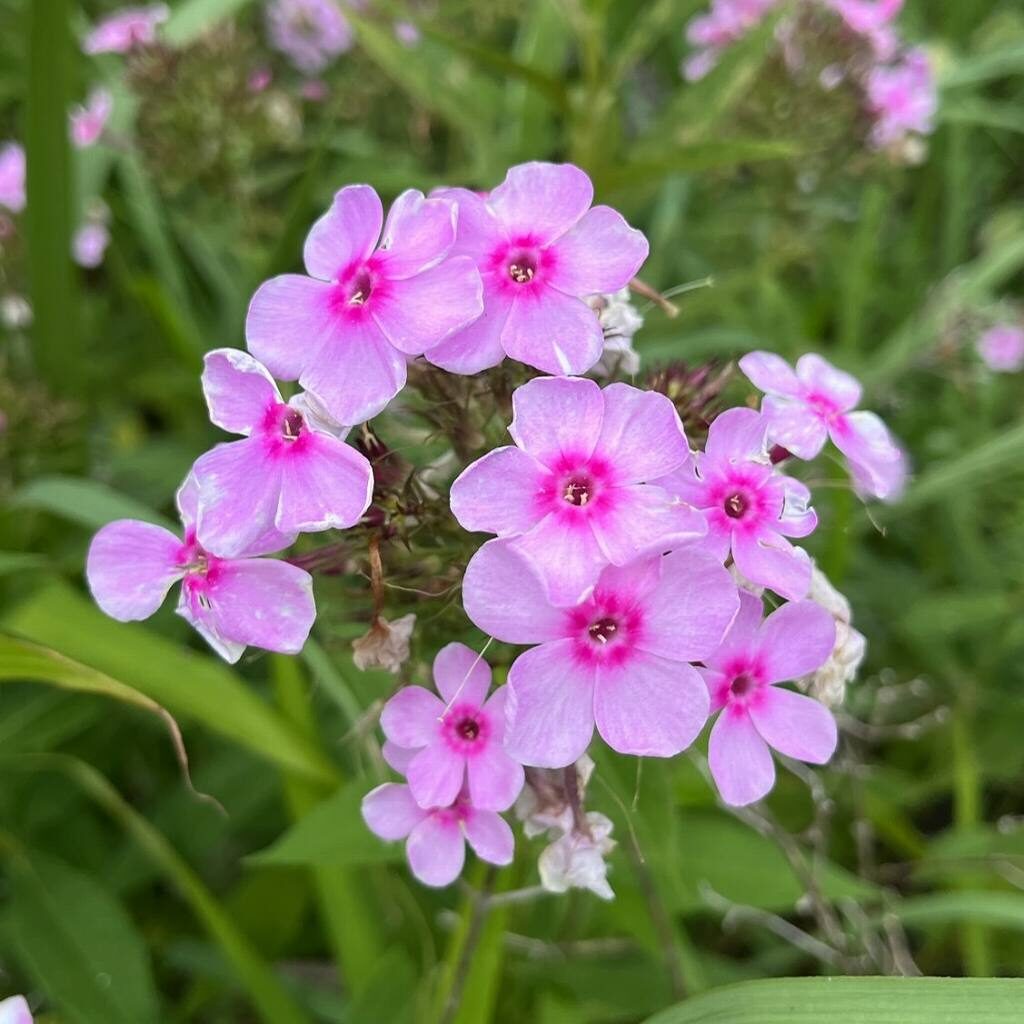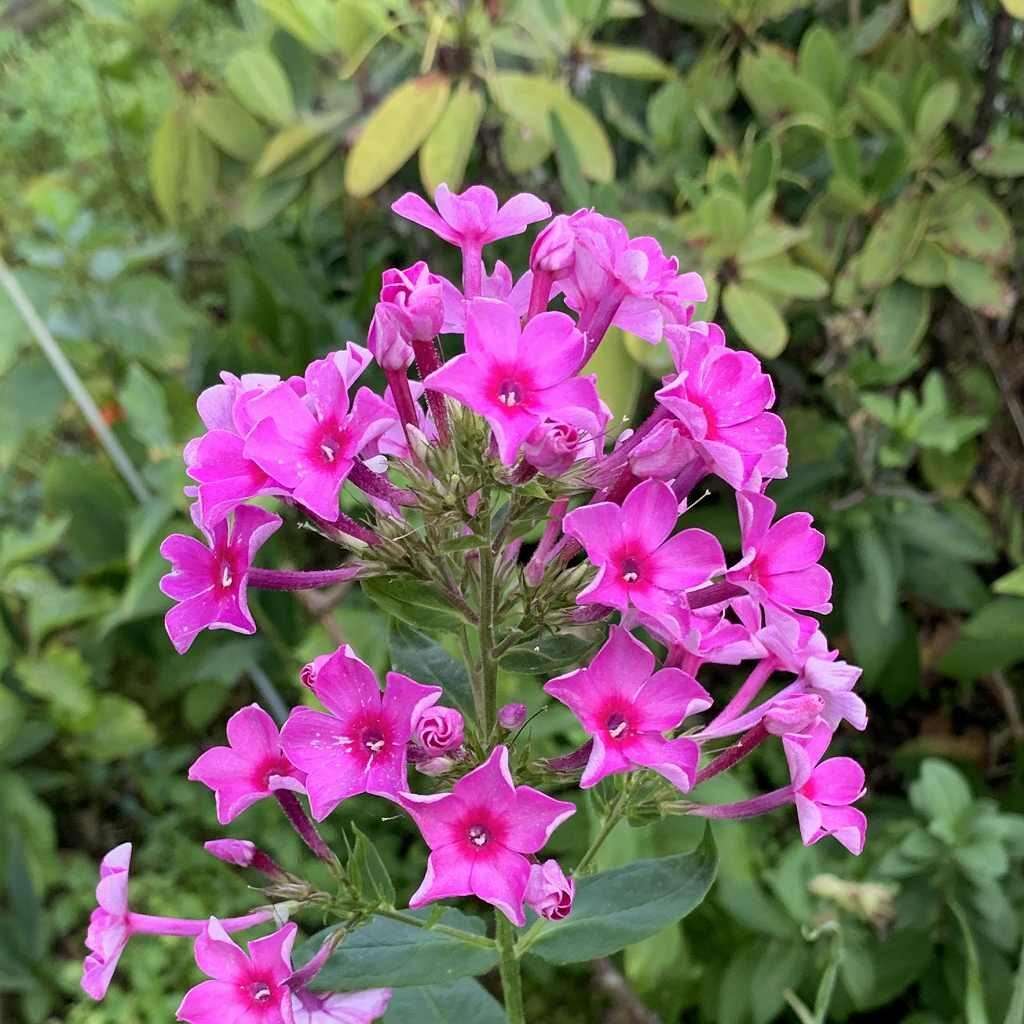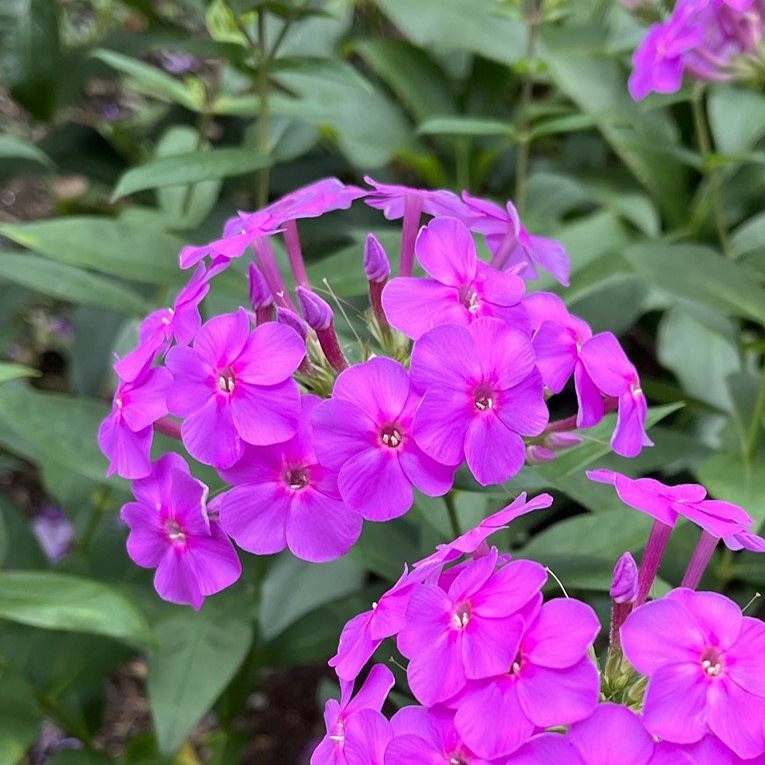クサキョウチクトウの和名の由来は花が「夾竹桃」に似ているから。大正時代から「花魁草」、戦後から「宿根フロックス」とも呼ばれます。
Garden Phlox is called Herbaceous Oleander in Japanese, and its origin is because the flower resembles “Oleander”. It is also called “High-class Prostitute” from the Taisho period, and “Perennial Phlox” after the Second World War.
【仮名】クサキョウチクトウ, オイランソウ
【和名】草夾竹桃, 花魁草
【英名】Garden Phlox
【学名】Phlox paniculata
【誕生】06/ 03, 07/ 19
【開花】06, 07, 08, 09, 10月
【花色】White, Pink, Red, Purple, Violet



クサキョウチクトウ
クサキョウチクトウの生態
クサキョウチクトウはハナシノブ科の多年草です。原産地は米国北東部で、日本へは遅くとも江戸時代に渡来。日当たりの良いところを好むものの暑さに弱く、関東以北なら問題なく育ちます。草丈があるので花壇の後方に植栽。梅雨に花が咲き、切り戻せば秋雨で再び花が咲きます。
クサキョウチクトウの和名
クサキョウチクトウの和名の由来は花が「夾竹桃」に似ているから。その名前が長過ぎるということで、大正時代に「花魁草」と呼ばれるようになります。花の雰囲気が位の高い遊女に通じ、花の匂いも白粉に似ていたから。その名前も戦後に遊郭がなくなると使われなくなりました。
クサキョウチクトウの英名
クサキョウチクトウの英名フロックスは属名に由来し、ラテン語で「火炎」という意味です。種名のパニキュラータは「円錐花序」という意味。日本でも戦後、花魁草という和名が使われなくなると「宿根フロックス」や「フロックス・パニキュラータ」で流通するようになりました。
クサキョウチクトウの形態
クサキョウチクトウは直立した茎の先端に小さな花々を丸みのある円錐状に咲かせます。花は花筒が長く、花冠が深く5裂し、控えめな雄しべが5本、緑色の萼片が5枚。花後は蒴果を結びます。葉は対生で葉柄が短く、細長い卵形。花だけでなく、葉も何となく夾竹桃に似ています。
Garden Phlox
Garden Phlox is a perennial plant of the family Polemoniaceae. Originating in the northeastern United States, it was introduced to Japan in the Edo period at the latest. Although it likes sunny places, it is sensitive to heat, and grows well north of the Kanto region. Planted in the back of the flower bed because it is tall. Flowers bloom in the rainy season, and if cut back, flowers will bloom again in the autumn rain.
Garden Phlox is called Herbaceous Oleander in Japanese, and its origin is because the flower resembles “Oleander”. Because the name was too long, it came to be called “High-class Prostitute” in the Taisho period. Because the atmosphere of flowers was familiar to high-ranking prostitutes, and the smell of flowers was similar to white powder. The name also fell out of use when the red-light district disappeared after the war.
The English name Garden Phlox is derived from the genus name and means “flame” in Latin. The species name paniculata means “panicle”. Even in Japan, after the Second World War, when the Japanese name High-class Prostitute was no longer used, it began to be distributed as “Perennial Phlox” and “Phlox Paniculata”.
Garden Phlox produce small, rounded cones of flowers at the tips of upright stems. The flower has a long tube, a deeply 5-lobed corolla, 5 discreet stamens, and 5 green sepals. After flowering, it bears capsules. The leaves are opposite, have short petioles, and are elongated oval. Not only the flowers but also the leaves are somewhat similar to oleanders.


